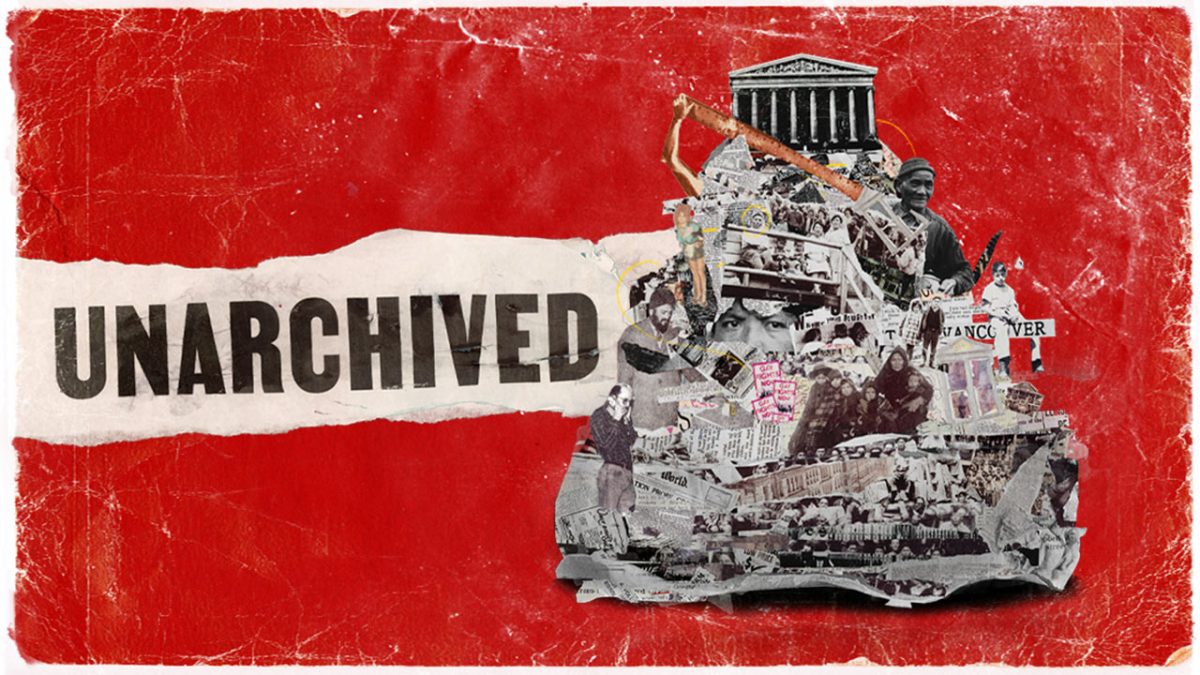Documentary by Hayley Gray and Elad Tzadok explores the importance of community archives

“Unarchived” via National Film Board of Canada.
The upcoming documentary Unarchived addresses the incomplete history of marginalized communities in British Columbia. This documentary premiered on March 5 at the IMAX Victoria Film Festival, at The Royal BC Museum (RBCM) with more screenings on March 10 and March 18.
Hard-hitting music at intervals accompanied by thought-provoking questions from leaders of historically underrepresented communities in British Columbia sets the tone of this documentary.
The documentary is divided into five parts, and includes interviews with archivists like Ron Dutton, a retired librarian who was passionately involved in the initial movement of the Gay Liberation Front back in 1972. As he saw it, there was a need to record this time’s social and political environment, and Dutton took up this responsibility. He collected every hand-out, brochure, newspaper article, and poster, forming an extensive collection over the course of his lifetime. We are all a part of history at any given point, knowing or unknowingly. Dutton was well aware of the history being created, and his 750 000-item collection tells the story of the gay rights movement in Vancouver.
Commenting on the racist, homophobic, transphobic, and ableist past of the Canadian government, Unarchived focuses on the fact that historically oppressed communities are not represented accurately in government archives. Lack of minority representation in textbooks, mainstream media, and museums takes an insidious toll on people. “We were everywhere, but we were seen nowhere” is a statement that stood out in the documentary.
The South Asian community is another neglected history in British Columbia. Satwinder Bains, the head of the South Asian Legacy project, shares snippets of the inspiring story of Mayo Singh and the village of Paldi, a Sikh-founded intercultural community that has missed being a part of history. Paldi, a small town near Duncan, was a microcosm of Canadian society with East Indians, Chinese, Japanese, Ukrainian, Scottish, and English people growing up together as one big family.
UBC Professor of History Henry Yu is also interviewed, highlighting the history of surveillance of Chinese people in British Columbia, and their exclusion from society. Despite being largely missing from British Columbian history, Chinese people are conveniently seen in past police records, targeted for breaking laws that only apply to them. “The process of silencing makes a lot of noise,” Yu concludes.
Apologies may come from government leaders, yet they have consistently failed to address this missing representation. Conversely, the leaders of each community in this documentary play a part in creating awareness for these incomplete accounts of B.C.’s history.
With past accusations of racism stemming from the workers of the RBCM, now is the best time to intervene in British Columbia’s historical trajectory. Bains is one of the few who claimed their historical presence and helped transform the museum space into a more inclusive one by introducing the “Haq and History” display. It is a traveling exhibit that is making its way through Canada each year fulfilling its goal of creating awareness and building on the deep rooted history of South Asians in Canada.
Repatriation is an ongoing process, and community leaders like Marion, Yu, and Bains are relentlessly searching for their community’s stories and bringing back the mementos that survived time but never made it to our history textbooks. Every community deserves its story to be told as completely as possible. Unarchived is a trailer to these untold stories that are now making their way into history books.
Watching the documentary is eye-opening and acts as a reminder of all the work in progress regarding the acknowledgment of marginalized communities in the history of British Columbia. It celebrates communities while achieving its goal of creating a buzz around the negligence of minority history. Unarchived is a crash course to an inclusive history of British Columbia.








